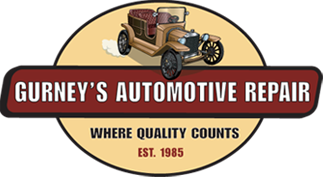Every vehicle manufactured in the U.S. has to pass an Environmental Protection Agency (EPA) test procedure called the Federal Test Procedure. This sets the acceptable limits of wear and/or failure for the emission control system. When you come in for auto repair in Nashua NH because of a “Check Engine Light” it is probably because it has fallen beneath these set conditions. A vehicle may not pass a NH state inspection if these problems grow worse.
Should I get I get auto repair in Nashua NH?
The Drive Cycle and Emissions Readiness Monitors are methods used by the powertrain control module (PCM) to determine whether an emissions system repair was properly performed. A Drive Cycle is a special test drive that duplicates the scenario of a person starting her car and making a short freeway trip, as if she were driving to work—it can be performed at our auto repair location in Nashua NH. While the Drive Cycle test is going, the engine computer runs tests to see if the emissions system is working properly.
When a vehicle has an emissions system problem, it almost always triggers a Check Engine or Service Engine Soon Light. This signals that a problem has been detected and a fault code has been recorded in the powertrain control module (PCM). If you see this light, don’t worry, we can service the problem at our auto repair shop in Nashua NH.
This process was designed to prevent a vehicle from slipping through an emissions test with a known problem. Until 1996, a common tactic was to turn off the Check Engine Light by clearing the code just before an emissions test, without performing the proper repair. The Drive Cycle and Emissions Readiness Monitors have, for the most part, stopped this unethical tactic.
What Is a Drive Cycle?
After the proper repair has been completed and the fault code cleared, the PCM will run a series of self-tests to determine whether or not the repair actually corrected the problem and if the various emissions systems are running properly. If they are, they can now properly minimize the emissions released into the atmosphere from the vehicle’s operation.
A Drive Cycle replicates the conditions of a person going out and driving his vehicle after it has been sitting overnight. First, he cold starts his engine and it warms up a bit while he is buckling his seat belt, selecting the radio station or CD he wants and adjusting the volume, and letting the windows defrost a little. The car is then driven through stop and go scenarios through city streets at speeds of 25 to 35 mph. Then, the car enters the freeway and accelerates briskly at half throttle or more to match the speed of the other drivers as they enter the flow of the freeway traffic. Then the vehicle is driven at a steady, conservative speed of between 55 and 60 mph for at least four to five miles.
After this, the vehicle pulls off the freeway and is driven a bit more in city driving conditions before pulling into a parking place where the engine idles for 20 to 30 seconds before being turned off.
On many vehicles, one of these Drive Cycles is sufficient enough to set all or most of the Readiness Monitors. Other vehicles require that this entire process be repeated on two or more successive days. Normally this is not a problem, unless it delays your NH State Inspection.
What do the Readiness Monitors have to do with a NH state inspection?
We may have explained to you, especially if you needed an emissions repair to pass the NH State Inspection that the Readiness Monitors in your vehicle are “not ready”. The emission control system has several sub-systems that are continuously or non-continuously monitored in order to control the emissions released by the vehicle when it is being operated or parked.
There are three sub-systems that are continuously monitored. While the vehicle is being operated, the PCMs are evaluating the performance of these sub-system 100 percent of the time. The sub-systems are:
- · Misfire Monitor
- · Fuel System Monitor
- Continuous Component Monitor
There are also five or more non-continuously monitored sub-systems. While the vehicle is being operated, and even while it is parked, the PCM is testing the performance of these sub-systems during very specific operating conditions. These conditions may only occur once every 24 hours, such as “cold starting” after a vehicle has been parked for at least eight or more hours. These sub-systems are:
- EGR Monitor
- EVAP Monitor
- Oxygen Sensor Monitor
- Heated Catalyst Monitor
- Air Conditioning Monitor
- Catalytic Converter Monitor
- Secondary Air System Monitor
- Oxygen Sensor Heater Monitor


